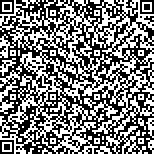| 引用本文: | 杨建朋,曹亮,董玉国,刘金虎,窦硕增.海水酸化和甲基汞胁迫条件下文蛤免疫应答和生物矿化响应[J].海洋科学,2023,47(7):22-34. |
| |
|
| |
|
|
| 本文已被:浏览 409次 下载 589次 |

码上扫一扫! |
|
|
| 海水酸化和甲基汞胁迫条件下文蛤免疫应答和生物矿化响应 |
|
杨建朋1,2, 曹亮1, 董玉国3, 刘金虎1, 窦硕增1,2
|
|
1.中国科学院海洋研究所 海洋生态与环境科学重点实验室, 山东 青岛 266071;2.中国科学院大学, 北京 100049;3.华能霞浦核电有限公司, 福建 宁德 355100
|
|
| 摘要: |
| 海洋酸化背景下重金属对海洋生物的毒性效应是一个重要的生态毒理学研究问题。海洋酸化不仅直接影响海洋贝类的生理过程,也通过改变重金属的存在形式和生物可利用性进而影响其生物毒性。为研究海洋酸化背景下甲基汞(MeHg)对海洋贝类免疫和生物矿化的毒理效应,本研究将采集于野外的文蛤(Meretrix petechialis)置于不同pH水平(二氧化碳分压;pH 8.10/背景水平、7.70/中度酸化和7.30/高度酸化)和甲基汞质量浓度(对照、溶剂对照、0.1,1和5 μg/L)的海水中共同暴露21 d,研究文蛤内脏团和鳃组织内免疫应答和生物矿化相关的生物标志物对海水酸化和MeHg共同胁迫的响应。结果表明,海水酸化和MeHg均显著影响其免疫应答策略,不同胁迫水平对各类生物标志物具有组织差异性。具体而言,MeHg暴露诱导内脏团中碱性磷酸酶(AKP)和溶菌酶(LZM)活性,表明MeHg对免疫解毒机制有刺激作用,在一定程度上提高了其免疫应答。海水酸化抑制了鳃和内脏团中AKP活性,抑制其免疫应答。在生物矿化相关酶中,在海水酸化和MeHg共同胁迫下钙-ATP酶(Ca2+-ATP)活性显著下降,干扰其离子平衡和生物矿化。海水酸化加剧了MeHg胁迫对文蛤免疫应答和生物矿化的毒理作用。相关系数分析和主成分分析表明这些生物标志物可以协同防御环境胁迫对免疫应答和生物矿化策略的毒理作用。这些生物酶对海水酸化和MeHg胁迫响应比较敏感,可以作为评价海洋酸化背景下MeHg对文蛤两种生物组织免疫功能毒性效应的潜在生物标志物。研究结果为理解海洋酸化和重金属胁迫对贝类生理功能的影响提供新见解,为评估海洋酸化背景下贝类种群变动和资源管理提供科学依据。 |
| 关键词: 海水酸化 甲基汞 文蛤(Meretrix petechialis) 生理响应 生物标志物 |
| DOI:10.11759/hykx20230411001 |
| 分类号: |
| 基金项目:国家自然科学基金资助项目(42176107) |
|
| Immune response and biomineralization in the gills and visceral mass of the clam, Meretrix petechialis, to methylmercury toxicity under ocean acidification conditions |
|
YANG Jian-peng1,2, CAO Liang1, DONG Yu-guo3, LIU Jin-hu1, DOU Shuo-zeng1,2
|
|
1.Key Laboratory of Marine Ecology and Environmental Sciences, Institute of Oceanology, Chinese Academy of Sciences, Qingdao 266071, China;2.University of Chinese Academy of Sciences, Beijing 100049, China;3.Huaneng Xiapu Nuclear Co. Ltd., Ningde 355100, China
|
| Abstract: |
| The toxic effects of heavy metals on marine organisms are an important topic within the field of ecotoxicology. Ocean acidification affects physiological processes, such as the formation of the calcium carbonate shell of marine shellfish and the form and bioavailability of pollutants, particularly heavy metals, and thus their biological toxicity. Marine shellfish have an open circulatory system, so their physiology is vulnerable to environmental change. To investigate the toxic effects of methylmercury (MeHg) on the immune response and biomineralization of marine bivalves under seawater acidification (SA) conditions, wild-caught clams (Meretrix petechialis) were exposed to seawater of different pH levels (CO2 partial pressure; pH 8.10/no SA, 7.70/moderate SA, and 7.30/extreme SA) and MeHg concentrations (control, solvent and control: 0.1, 1, and 5 μg/L, respectively) for 21 days. The responses of biomarkers related to immune function and biomineralization in the visceral mass and gill tissues of the clam to the combined stress were bioassayed after the exposure. The immune-related biomarkers included lysozyme (LZM), acid phosphatase (ACP), alkaline phosphatase (AKP), and heat shock protein 70 (HSP70). The biomineralization-related biomarkers included Na+/K+-ATPase, Ca2+-ATPase, and carbonic anhydrase. Principal component analysis (PCA) and correlation coefficient analysis were employed to evaluate the collective effects of the combined stressors on the two physiological processes. The results showed that SA and MeHg significantly affected the immune response, and various biomarkers exhibited tissue-specific responses to different levels of stress. Specifically, MeHg exposure induced AKP and LZM activities in the visceral mass, indicating that MeHg stimulated immune detoxification mechanisms and enhanced the immune response. SA inhibited AKP activity in the gill and visceral mass, thus suppressing the immune response. Ca2+-ATPase activity decreased significantly under the combined SA and MeHg stress, which disrupted ion balance and biomineralization. SA exacerbated the toxic effects of MeHg on the immune response and biomineralization. Correlation analysis and PCA indicated that these biomarkers worked together to defend against the toxic effects of co-occurring environmental stressors on the immune response and biomineralization strategy. ACP, LZM, HSP70, Na+/K+-ATPase, and AKP were sensitive to MeHg exposure under SA conditions and could be potential biomarkers of SA and MeHg co-exposure. The present study provides new insights into the effects of ocean acidification and heavy metal stress on the physiology of bivalves and offers a scientific basis for evaluating changes in bivalve populations and resource management under ocean acidification scenarios. |
| Key words: seawater acidification methylmercury Meretrix petechialis physiological response biomarkers |
|
|
|
|
|
|
